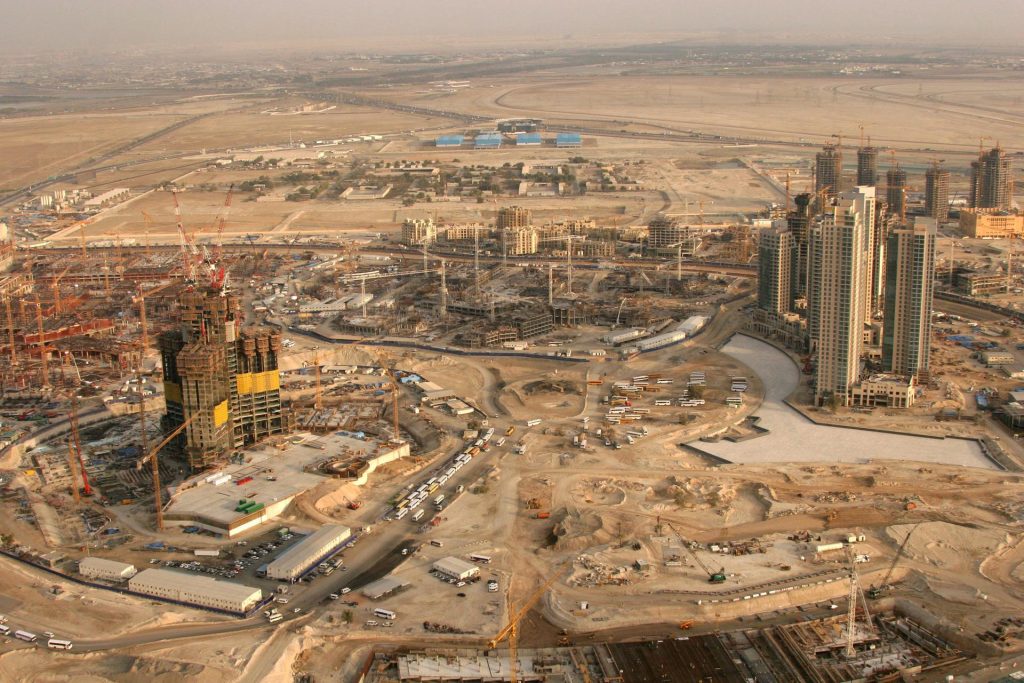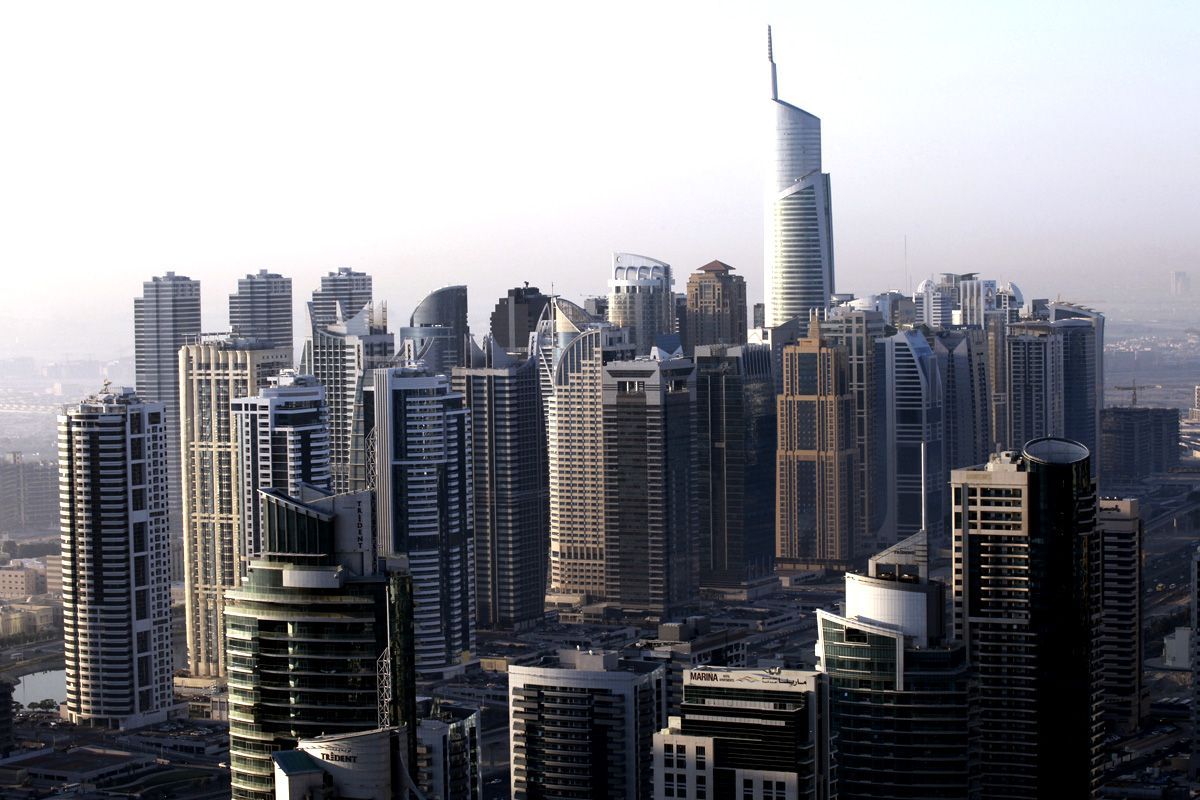The Dubai financial services market has emerged as a critical hub for regional and global finance, characterized by rapid growth, regulatory evolution, and unique challenges. This report synthesizes historical developments, current dynamics, and future projections to provide a holistic understanding of the sector. Key insights reveal a market in transition, marked by expanding Islamic finance frameworks, technological disruption in retail investing, persistent regulatory gaps in consumer protection, and growing competition between traditional institutions and fintech innovators. The analysis draws on regulatory publications, market participant testimonials, and transactional data patterns to map the sector’s trajectory through 2040, identifying critical inflection points for policymakers, investors, and financial service providers.
Historical Development of Dubai’s Financial Ecosystem
Early Foundations in Trade Finance (Pre-2000)
Dubai’s financial sector originated as an extension of its maritime trade economy, with early institutions focused on Letters of Credit and trade financing instruments. The establishment of the Dubai International Financial Centre (DIFC) in 2004 marked the first formal attempt to create a Western-style financial hub, introducing Common Law jurisdiction and tax incentives that attracted multinational banks like HSBC and Standard Chartered 6. During this period, Islamic finance gained prominence through the Dubai Islamic Bank’s pioneering work in Sharia-compliant mortgage products, capturing 28% of the UAE’s banking assets by 2005 6.

Global Financial Crisis Impact (2008-2014)
The 2008 crisis exposed structural vulnerabilities, particularly in real estate-linked financial products. As noted in retail investor accounts, structured notes tied to property developments collapsed, with portfolios losing 60-70% of value within months 1 4. This period saw the Dubai Financial Services Authority (DFSA) implement stress testing regimes and tighten leverage ratios for banks, reducing real estate exposure from 40% to 28% of total loans by 2012 6. However, gaps remained in retail investor protection mechanisms, allowing continuation of high-risk commission-driven sales practices1 .

Diversification Phase (2015-Present)
Post-2015 policy initiatives prioritized sector diversification through three pillars:
Fintech Integration: Launch of the DIFC FinTech Hive in 2017, fostering 200+ startups including robo-advisors like Sarwa and blockchain payment platforms 2 6.
Islamic Finance Expansion: Introduction of sovereign Sukuk programs totaling $25 billion, establishing Dubai as the global leader in Islamic bond issuance 6.
Capital Market Reforms: DFM launched Nasdaq Dubai Equity Platform in 2020, increasing foreign ownership limits to 100% across 56 listed companies 4.

Current Market Landscape
Institutional Banking Dominance
Traditional banking retains 68% market share, concentrated in five major players: Emirates NBD, Dubai Islamic Bank, Mashreq, Commercial Bank of Dubai, and HSBC Middle East 6. Corporate lending focuses on infrastructure (35%), trade finance (28%), and SME sectors (17%), with digital adoption rates lagging behind regional peers at 42% mobile banking penetration versus Saudi Arabia’s 61% 6.
Retail Investment Dynamics
The rise of self-directed investing platforms has disrupted traditional advisory models. Platforms like Sarwa and Interactive Brokers (IBKR) now facilitate 23% of retail transactions, compared to 8% in 2018 2. This shift correlates with growing consumer distrust in commission-based advisors, where 72% of structured note products underperform comparable ETFs over five-year horizons1 2.
Regulatory Framework
The DFSA’s 2023 Unified Rulebook introduced critical reforms:
Advisor Certification: Mandatory CISI Level 4 certification, reducing unqualified practitioners from 63% to 38% within 18 months 1
Product Transparency: Requirement for annualized fee disclosure in percentage terms, addressing hidden costs in long-term savings plans1 2
Fintech Sandbox: Accelerated licensing for 45 blockchain and AI-driven wealth management tools since 2022 6
Despite progress, enforcement gaps persist. A 2024 mystery shopping exercise found 29% of advisors still recommending high-commission offshore products without adequate risk disclosure 1.
Technological Disruption and Innovation
Automated Investment Platforms
Sarwa’s hybrid robo-advisory model demonstrates the sector’s evolution, combining algorithm-driven ETF portfolios (0.85% annual fee) with human advisor access. User reports indicate 7-9% annualized returns since 2020, outperforming 78% of traditional advisory portfolios 2. IBKR’s integration with ENBD allows AED-denominated transfers at 0.15% FX spread, capturing 12% of the expat retirement market 2 4.
Blockchain Integration
The DFM’s 2024 pilot of distributed ledger technology reduced equity settlement times from T+2 to T+1, attracting $320 million in institutional inflows. However, retail adoption remains limited, with only 4% of trades utilizing blockchain verification4 6.
AI-Driven Risk Management
Banks have deployed machine learning models to realign credit risk assessments, reducing SME loan defaults by 19% through alternative data analysis (cash flow patterns, utility payments). Emirates NBD’s “Business Health Score” algorithm now influences 43% of commercial lending decisions 6.
Islamic Finance Leadership
Product Innovation
Dubai Islamic Bank’s 2023 “Green Sukuk” program raised $1.2 billion for renewable energy projects, achieving 4.8% yield with AA- rating from Fitch. Sharia-compliant assets now constitute 31% of total banking sector assets, projected to reach 40% by 2027 6.
Regulatory Challenges
Persistent disagreements between the DIFC and UAE Central Bank on Murabaha profit rate caps (currently 4.5% vs conventional 6.2%) create arbitrage opportunities, with 17% of corporate borrowers switching to Islamic facilities in 2024 purely for cost savings 6.
Critical Challenges and Risks
Consumer Protection Deficits
Despite regulatory efforts, 34% of retail investors report misunderstanding product risks, particularly in:
Structured Notes: 62% of investors cannot explain the embedded derivatives in their portfolios 1
Long-Term Savings Plans: Penalty fees averaging 23% on early withdrawals from 10+ year contracts1 2
Offshore Propositions: 41% of expats hold unsuitable Swiss/Channel Island investments due to tax misconception 1
Talent Market Imbalances
The finance sector faces a dual workforce crisis:
Over-Supply: 78,000 CFAs/CIPs compete for 12,000 senior roles, driving 32% wage compression since 2020 3 5
Skill Gaps: Only 14% of professionals possess AI/ML capabilities required for modern roles 5
Real Estate Overexposure
Though reduced from pre-2008 levels, 31% of bank assets remain property-linked. Stress tests show a 20% price correction would trigger $12 billion in NPLs, eroding 15% of Tier 1 capital 6.
Future Projections and Strategic Recommendations
Market Growth Trajectories
Conservative modeling suggests:
2025-2030: 6.8% CAGR driven by Islamic finance and wealth management expansion
2031-2040: 4.2% CAGR as market matures, with fintech capturing 38% of revenue share
Critical Success Factors
Regulatory Harmonization: Merge DFSA and UAE Central Bank oversight to eliminate arbitrage gaps
Advisor Education Mandates: Require 50 hours/year CE on complex products and behavioral finance
Digital Infrastructure Investment: Allocate $150 million for blockchain settlement systems and API banking standards
Risk Mitigation Strategies
Product Bans: Prohibit structured notes for retail investors under $500k net worth
Stress Test Expansion: Include climate risk scenarios in capital adequacy assessments
Cross-Border Portability: Develop GCC-wide account transfer protocols to prevent stranded assets 4
Conclusion
Dubai’s financial services market stands at a critical juncture, balancing its aspirations as a global Islamic finance hub against legacy issues of consumer mistrust and real estate dependency. The sector’s future will hinge on decisive regulatory action to close protection gaps while nurturing fintech innovation. For policymakers, prioritizing unified oversight and digital infrastructure will prove essential. Investors must navigate shifting dynamics by favoring transparent, low-cost ETF products over opaque structured instruments. Institutions that successfully integrate AI-driven personalization with Sharia-compliant product innovation will likely capture dominant market share through 2040.
What are the key trends driving the growth of the Dubai financial services market?
2. Robust Financial Performance The financial sector's strong performance is evident in DIFC's 2024 revenue, which rose by 37% to AED 1.78 billion, and an operating profit increase of 55% to AED 1.33 billion. Additionally, the Dubai Financial Market (DFM) reached its highest level since May 2014, driven by robust corporate earnings in industrial and materials sectors.
3. Government Initiatives and Regulatory Reforms Dubai's government has implemented strategic initiatives to enhance the financial ecosystem. The DIFC offers a forward-thinking legal and regulatory framework, attracting international financial institutions. Initiatives like the FinTech Hive and the ADGM FinTech Regulatory Laboratory foster innovation and support the burgeoning fintech sector.
4. Expansion of the FinTech Sector The fintech industry in Dubai is experiencing rapid growth, with projections indicating an increase from $3.16 billion in 2024 to $5.71 billion by 2029. This expansion is supported by government initiatives and a tech-savvy population, driving demand for digital financial solutions.
5. Strategic Geographic Location and Business-Friendly Environment Dubai's strategic position as a gateway between East and West, coupled with its advanced infrastructure and favorable business regulations, has made it an attractive hub for financial services. The city's political stability and ease of doing business continue to draw investors and financial institutions.
These trends collectively underscore Dubai's emergence as a leading global financial center, driven by strategic initiatives, robust performance, and a conducive business environment.
How does the regulatory environment in Dubai impact financial services?
2. Attraction of Global Financial Institutions Dubai's regulatory environment has been instrumental in attracting a significant influx of global hedge funds and asset managers. The DFSA's robust yet business-friendly regulations have encouraged firms like Tudor Capital and Walleye Capital to establish operations within the DIFC. This trend has led to a 50% increase in the number of hedge funds in Dubai's financial hub, with the total reaching 75.
3. Emphasis on Innovation and FinTech The DFSA actively supports innovation in financial services, particularly in the FinTech sector. Initiatives such as the FinTech Hive provide a platform for startups to collaborate, test new technologies, and navigate regulatory requirements efficiently. This proactive approach has positioned Dubai as a regional leader in financial technology, attracting innovators and investors alike.
4. Commitment to Anti-Money Laundering (AML) Measures Dubai has implemented stringent anti-money laundering regulations to enhance the integrity of its financial system. The DFSA enforces comprehensive AML and counter-terrorist financing (CTF) requirements within the DIFC, aligning with international standards to combat illicit financial activities.
5. Collaborative Regulatory Initiatives In 2018, the DFSA, along with other UAE regulatory bodies, agreed on a common legislative framework to facilitate the promotion of domestic funds across the UAE. This collaboration allows for greater fluidity and integration within the country's financial markets, enhancing the appeal for both local and international investors.
In summary, Dubai's regulatory environment, characterized by its independent legal framework, commitment to innovation, stringent compliance measures, and collaborative initiatives, significantly impacts its financial services sector. These elements collectively enhance investor confidence, attract global financial institutions, and position Dubai as a leading international financial center.
What are the most common financial scams in Dubai and how can they be avoided?
Scammers impersonate legitimate organizations, such as banks or government agencies, to obtain personal and financial information. They often use emails, SMS, or phone calls to lure victims into providing sensitive data.
Prevention:
Verify the sender's identity before responding to unsolicited communications.
Avoid clicking on links or downloading attachments from unknown sources.
Contact the organization directly using official channels to confirm the legitimacy of the request.
2. Investment Scams
Fraudsters promote fake investment opportunities, promising high returns with minimal risk. These schemes often involve real estate, cryptocurrencies, or other financial products.
Prevention:
Conduct thorough research on investment opportunities and associated entities.
Be cautious of unsolicited investment offers, especially those guaranteeing high returns.
Consult with licensed financial advisors before making significant investments.
3. Employment Scams
Scammers pose as recruiters or employers, offering attractive job positions. They may request upfront fees for visas, training, or other expenses, then disappear once payments are made.
Prevention:
Be wary of job offers that require upfront payments.
Verify the company's legitimacy through official websites and contact information.
Avoid sharing personal information until the job offer is confirmed as genuine.
4. Romance Scams
Individuals create fake profiles on dating platforms to establish relationships and gain victims' trust. Eventually, they fabricate emergencies or investment opportunities to solicit money.
Prevention:
Be cautious of individuals who quickly profess love or escalate the relationship.
Avoid sending money or sharing financial information with someone you haven't met in person.
Research and verify the person's background and stories.
5. Fake Fines and Authority Impersonation
Scammers impersonate government officials or law enforcement, informing victims of fictitious fines or legal issues, demanding immediate payment to avoid further consequences.
Prevention:
Know that legitimate authorities do not request payments through unofficial channels.
Verify any claims by contacting the relevant agency directly using official contact information.
Report suspicious communications to local authorities.
6. Real Estate Scams
Fraudulent agents offer non-existent properties for sale or rent, collecting deposits or fees before disappearing.
Prevention:
Deal only with licensed real estate agents and verify their credentials.
Visit properties in person before making payments.
Use official channels and legal contracts for all transactions.
7. Overpayment Scams
Scammers send a check exceeding the required amount for a product or service, then request the excess be refunded. The original check eventually bounces, leaving the victim at a loss.
Prevention:
Be cautious of payments exceeding the agreed amount.
Wait for checks to fully clear before issuing refunds.
Use secure and verified payment methods.
General Safety Tips:
Stay informed about common scams and regularly update yourself on new fraudulent tactics.
Protect personal information and share it only with trusted entities.
Report suspected scams to local authorities or the Dubai Financial Services Authority (DFSA).
By maintaining vigilance and adhering to these preventive measures, individuals can significantly reduce the risk of falling victim to financial scams in Dubai.
How does the Dubai financial services market compare to other Middle Eastern markets?
According to the Global Financial Centres Index (GFCI) as of September 2024, Dubai ranks 16th globally, making it the highest-ranked financial center in the Middle East and Africa. Abu Dhabi follows at 35th, with other regional centers like Tel Aviv, Riyadh, and Doha ranking lower.
2. Attraction of Global Financial Institutions
Dubai's business-friendly environment, favorable tax regime, and strategic location have made it a magnet for international finance and law firms. Notable entities such as Marshall Wace, Rothschild, and Skadden have expanded their operations to Dubai, capitalizing on the emirate's robust financial infrastructure.
3. Competition with Regional Financial Hubs
While Dubai maintains a leading position, neighboring Abu Dhabi is intensifying efforts to attract wealth managers and asset management firms. Leveraging its substantial oil wealth and sovereign funds, Abu Dhabi has seen firms like Brevan Howard and Bridgewater Associates establish a presence. This intra-UAE competition underscores the dynamic and evolving nature of the region's financial landscape.
4. Regulatory Environment and Innovation
Dubai's regulatory framework, particularly within the Dubai International Financial Centre (DIFC), is designed to align with international standards, offering a transparent and reliable legal environment. Initiatives such as the FinTech Hive foster innovation, positioning Dubai as a regional leader in financial technology.
5. Economic Diversification and Growth
Dubai's economy has diversified beyond oil, with the financial services sector playing a pivotal role. In 2024, the DIFC reported a 37% increase in revenue, reaching AED 1.78 billion, reflecting the emirate's robust economic growth and resilience.
In summary, Dubai's strategic initiatives, regulatory environment, and proactive approach to innovation have solidified its status as the leading financial center in the Middle East, while regional counterparts continue to develop and enhance their financial markets.
What are the major players in the Dubai financial services market?
Address: Baniyas Road, Deira, Dubai, UAE
Phone: +971 600 540000
Website: www.emiratesnbd.com
Dubai Islamic Bank
Address: Al Shola Building, Al Ittihad Road, Deira, Dubai, UAE
Phone: +971 4 609 2222
Website: www.dib.ae
Mashreq Bank
Address: Mashreq Bank Building, Sheikh Zayed Road, Dubai, UAE
Phone: +971 4 424 4444
Website: www.mashreqbank.com
HSBC Middle East
Address: HSBC Tower, Downtown Dubai, UAE
Phone: +971 4 228 8007
Website: www.hsbc.ae
Standard Chartered Bank
Address: Downtown Dubai, Emaar Square, Building 5, Dubai, UAE
Phone: +971 4 508 4444
Website: www.sc.com/ae
Abu Dhabi Commercial Bank (ADCB)
Address: Emaar Business Park, Building 3, Sheikh Zayed Road, Dubai, UAE
Phone: +971 4 427 0700
Website: www.adcb.com
First Abu Dhabi Bank (FAB)
Address: Al Qouz, Sheikh Zayed Road, Dubai, UAE
Phone: +971 2 681 1511
Website: www.bankfab.com
Citibank UAE
Address: Citibank House, Khalid Bin Al Waleed Street, Bur Dubai, UAE
Phone: +971 4 311 4000
Website: www.citibank.ae
Barclays Bank
Address: Emaar Square, Building 4, Downtown Dubai, UAE
Phone: +971 4 365 3030
Website: www.barclays.ae
National Bank of Fujairah (NBF)
Address: NBF Building, Al Diyafah Street, Satwa, Dubai, UAE
Phone: +971 4 397 1700
Website: www.nbf.ae
Commercial Bank of Dubai (CBD)
Address: CBD Head Office, Al Ittihad Street, Deira, Dubai, UAE
Phone: +971 4 212 1000
Website: www.cbd.ae
RAKBANK
Address: Al Quoz Branch, Sheikh Zayed Road, Dubai, UAE
Phone: +971 4 213 0000
Website: www.rakbank.ae
Al Hilal Bank
Address: Al Wasl Branch, Al Wasl Road, Jumeirah, Dubai, UAE
Phone: +971 4 377 3600
Website: www.alhilalbank.ae
Noor Bank
Address: Sheikh Zayed Road, Dubai, UAE
Phone: +971 4 427 4343
Website: www.noorbank.com
Dubai Financial Market (DFM)
Address: World Trade Centre, Sheikh Zayed Road, Dubai, UAE
Phone: +971 4 305 5555
Website: www.dfm.ae
Dubai International Financial Centre (DIFC)
Address: Gate Building, DIFC, Dubai, UAE
Phone: +971 4 362 2222
Website: www.difc.ae
SHUAA Capital
Address: Al Kharbash Tower, DIFC, Dubai, UAE
Phone: +971 4 319 9000
Website: www.shuaa.com
Emirates Investment Bank
Address: Al Fattan Currency House, DIFC, Dubai, UAE
Phone: +971 4 231 7777







